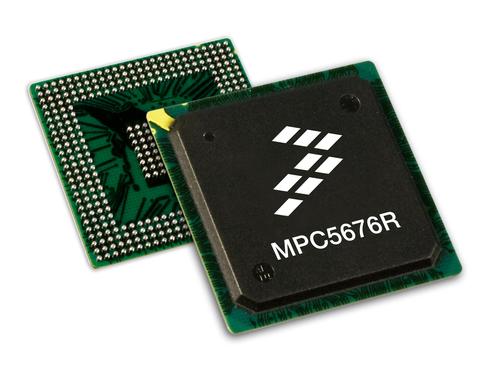October 25, 2011

Multicore microcontrollers (MCUs), already popular in safety-related applications, may be about to move into a new realm.
In that regard, Freescale Semiconductor announced that it is rolling out a 32-bit multicore product aimed at automotive powertrain applications, which have previously been dominated by single-core technology. Other MCU makers say they're working hard on developing multicore products for next-generation vehicle powertrains, as well.
"Powertrain is the last frontier in automotive to adopt multicore," noted Philip Pesses, product manager for the automotive powertrain team at Freescale, in an interview with Design News. "Up to now, we've been able to get the performance we needed, but single-core has been clocking out at 300 MHz, and powertrain applications need to increase their throughput."
Automotive engineers have employed multicore for years, mostly for safety-related chassis and body applications. Antilock brakes, power steering, and stability control all use multicore today.
Until now, though, powertrain applications haven't needed dual-core MCUs. That's been true because gas-burning vehicle powertrains have employed just one or two MCUs -- one for the engine and possibly a second for the transmission.
But now that's changing. With fuel economy demands growing more stringent, automotive engineers are beginning to look at new ways of making engines more efficient. Direct injection -- in which gasoline is injected directly into the combustion chamber -- is gaining favor among some car manufacturers. So is cylinder deactivation and knock detection.
"Customers are willing to spend more money on extra processing capability in order to boost their corporate fuel economy," Pesses told us.
Multicore helps with direct injection because it enables the engine to optimize the spark timing for combustion. Doing so involves about 36,000 conversions per second per cylinder, which means that number-crunching ability is critical. Freescale said that its new multicore MCU, known as the Qorivva MPC5676R, offers four times more performance than previous-generation single-core devices, thus enabling automakers to predict spark timing more precisely and boost fuel economy by as much as 20 percent.

The situation is similar with cylinder deactivation and knock detection. Better CPU performance is needed to manage the control dynamics in cylinder deactivation. And faster MCUs allow the engine control module to predict the so-called "knock window" more accurately. The result is up to 20 percent greater fuel efficiency from cylinder deactivation and 5 percent from knock detection.
In the near future, multicore may also find another home. As hybrids proliferate, engineers are likely to reach for multicore as a means of handling the complexities of parallel powertrains.
"The hybrid really complicates things," said Amrit Vivekanand, director of business development for Renesas Technology America, a semiconductor maker that is working on multicore technology for next-generation automotive powertrains. "You've got motor control and battery management. And you need to manage the vehicle's powerplants."
Vivekanand said there's also another good reason for hybrids to employ multicore. As the number of MCUs on vehicles rises, wiring rises, too. Today's mid-size vehicles typically carry between 45 and 70 pounds of wiring on board, and the problem is bound to get worse in hybrids. Automotive engineers want to head off that dilemma before it happens. They can accomplish that by "up-integrating" -- in other words, reducing the number of MCUs by packing more performance onto them.
"Up-integrating simplifies everything," Vivekanand told us. "It reduces wiring and saves money."
Semiconductor makers believe that the migration toward multicore powertrain is virtually unstoppable. Fuel efficiency demands aren't going away, and performance requirements will continue to climb over the next few years.
For further information
Search Freescale MCUs on Datasheets.com
Search Renesas on Datasheets.com
About the Author(s)
You May Also Like



